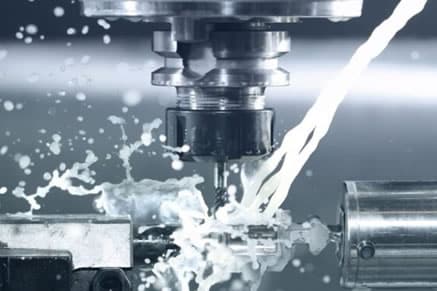
On the surface, die casting and injection moulding may appear like similar manufacturing processes.
If you dig down deeper, however, you’ll realize that there are key differences between them that may make die casting preferable over injection moulding, and vice versa. These differences originate in the moulding process and the materials used, both of which affect the cost, speed, efficiency, material variety, and end result of the parts produced.
Which is better? Die casting VS injection moulding?
For example, die casting is performed using either a hot or a cold chamber, into which molten metal is fed or ladled, respectively. Watch a video of the process here. Whereas injection moulding involves feeding molten plastic into a steel or aluminium mould and then leaving it to harden.
One involves more steps and higher cost materials but produces a stronger and slightly more precise result. The other is faster and uses less expensive materials, but the resulting parts will almost always be made from plastic or thin metal.
To get a better idea of which of these two popular manufacturing methods is best for your unique project, we’re going to take a look at the similarities and differences between die casting vs injection moulding. Then, we’ll compare their respective strengths and weaknesses and show you examples of use cases where each one can be implemented to the greatest effect.
Similarities Between Die Casting and Injection Moulding
The main similarity between die casting and injection moulding is the molten moulding process.
Both processes involve placing a molten substance inside of a mould, letting it harden into the mould’s shape, and then removing the newly manufactured part to start the process all over again.
injection moulding production manufacturing plastic parts
Differences Between Die Casting and Injection Moulding
Die Casting Uses Metals, Injection Moulding Uses Plastics
Die casting is primarily used to produce parts and prototypes made out of a metal substance, such as aluminium, zinc alloy, or magnesium. Injection moulding, on the other hand, uses mostly plastics (although it can also process metals and alloys; the results are just not as strong or precise).
Die Casting Produces Stronger and Higher Precision Parts
The parts that die casting produces are often stronger and more geometrically complex than those made from injection moulding. Die casting also includes high tolerances and can thus produce details with a higher degree of precision.
Injection Moulding Offers Wider Range of Materials
There’s no denying that injection moulding offers a wider range of materials than die casting. With the former, you get to choose from plastics, resins, and other polymers, as well as metals and alloys. But with the latter, you’re limited to only a handful of materials: zinc alloy, magnesium, and aluminium.
Injection moulding offers a wider range of material selection
Die Casting is More Expensive
One of the main strengths of the injection moulding and die castings methods are their low cost per part for higher volumes. While both are great options for cost-effective production, it’s worth noting that the cost of fabricating a unit of part in die casting is generally more expensive than injection moulding.
Strengths and Weaknesses of Die Casting vs Injection Moulding
When it comes to die casting, its strengths are that it produces higher quality, higher precision, and stronger outputs. The different metals used also come with unique properties that may make them more suited to certain types of products than plastic.
On the other hand, die casting’s biggest weakness is that it’s costly. It’s also slower, with a lead time that starts at three weeks. For startups that are running on a low budget, or for companies that are prioritizing speed over everything else, this may not be the best option.
The strengths of the injection moulding process is its low cost per part, its wide range of available materials, and accuracy. You can have up to 100,000 identical injection units ready to go from a single mould, which typically takes around two weeks to fashion.
Injection moulding is weaker than die casting, though, when we compare the strength of metal parts versus plastic parts, as well as the high tolerances and precision of the latter method.
XTJ is a leading OEM Manufacturer that is dedicated to providing one-stop manufacturing solutions from prototype to production. We are proud to be an ISO 9001 certified system quality management company and we are determined to create value in every customer relationship. We do that through collaboration, innovation, process improvements, and exceptional workmanship.

